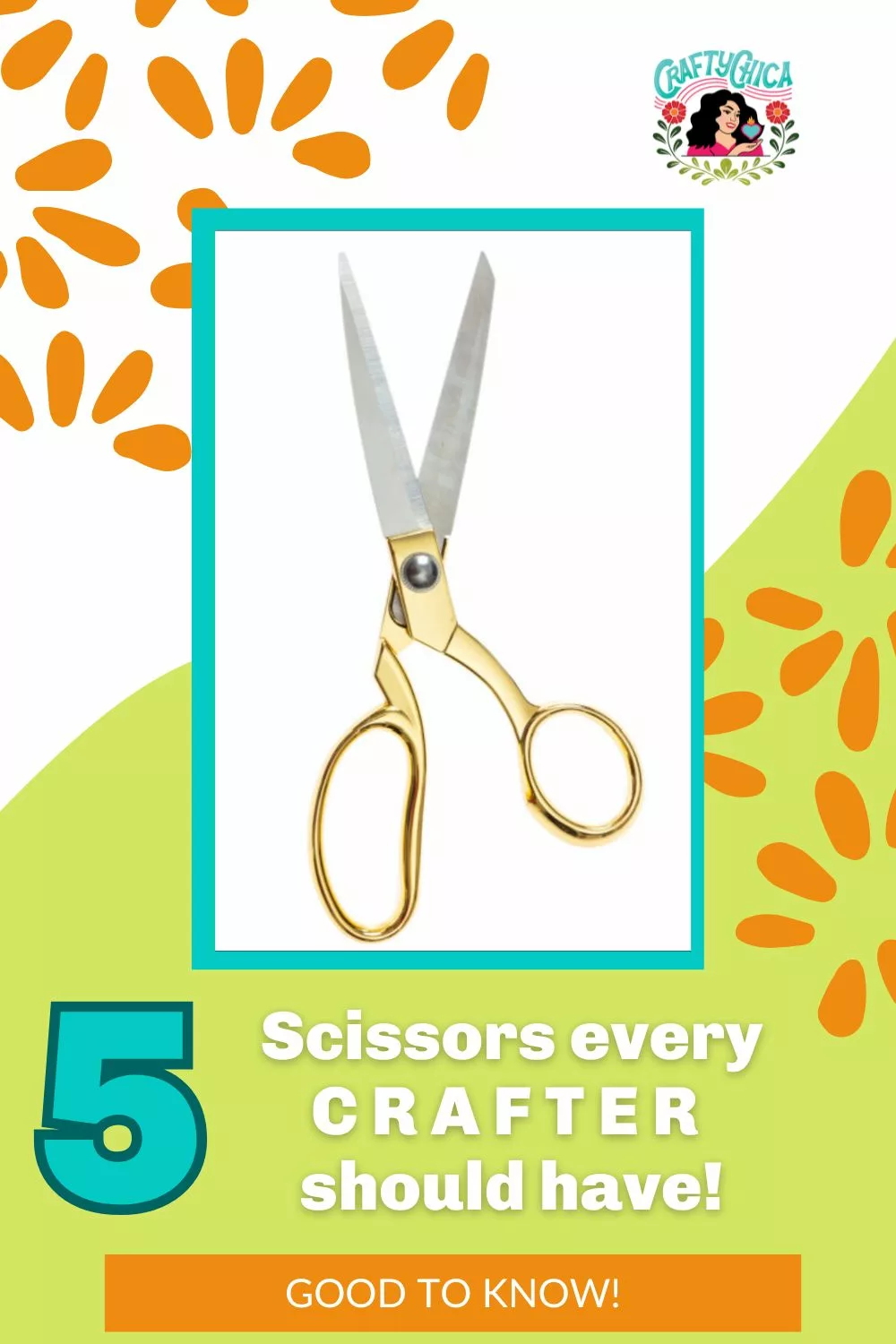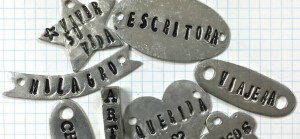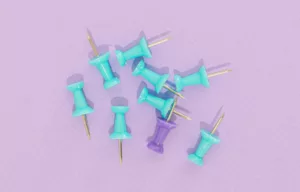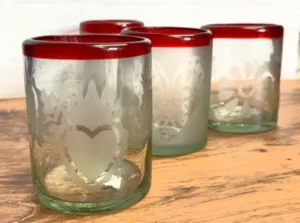Here are my choices for the five best scissors for crafting.
Whether you’re a seasoned artist or a DIY enthusiast, I swear – having the best craft scissors to match your project will make a difference.
More than a clean cut
Kitchen scissors? Sewing Scissors? Non-stick scissors? Paper scissors?
Does it matter which you use? Actually, it does. Educating yourself about these different scissors will make life easier. Crafty life, at least!
NOTE: I know it seems like a luxury to have FIVE different types of scissors, but there are affordable ways you can find these. Try a thrift store, yard sales, even ask your crafty friends if they want to trade. Post on social media how you are in need of a pair. you might just be surprised at what comes back!
Five best scissors for crafting
I’ve been crafting forever. I’m not the type to buy every new tool on the market, but I am always open to discovering resources. I recently noticed I have five types of scissors I always use. I’m prone to hand fatigue, so the most important factors to me are soft grip (when possible) or some kind of ergonomic design. Especially if I’m in the middle of a bunch of sewing projects.
Get ready to cut above the rest and discover the best option of scissors that will take your crafting skills to new heights.
Before you invest in these special scissors, check for handle comfort, straight blades, and good quality. Even if they are dollar store scissors, you can tell by looking at them.
This list has affiliate links because these are products I have and love.
All-Purpose Scissors
The orange handled Fiskars are my fave for everyday use. They have heavy stainless steel blades, plastic handles, and come in regular and non-stick (my preference). These are versatile scissors for different materials that make precise cuts for crafting projects: Paper, fabric, and thin plastics. They have a comfortable grip and a medium-length blade, making them a staple in any crafter’s toolkit. A really good pair of scissors that will last a long time!

Dollar store scissors
These are not exactly high-quality scissors, but great for anything weird you have to cut. I use these for trimming cured resin, thin wire, cardboard, sticky materials, etc. Also use these for workshops – I keep a big bin of them in the garage for that reason (Make sure to use a Sharpie and write your name on each pair). An essential tool indeed! Comfortable handles, a great option for newbie crafters.
Precision Scissors
Tiny but mighty! These are designed for detailed work and intricate designs, these are the type of scissors that have a super fine tip and micro-tip blades. They’re ideal for fussy cutting on paper, fabric, or any other material where accuracy is paramount. I really love the Tim Holtz scissors because the finger area is big and roomy!

Fabric Scissors
“Those are for fabric ONLY!” It’s the cry heard across the crafty land. Yup, this is a constant battle, but for a very good reason. If you use fabric scissors for any other reasons, it will dull the blades. We want our fabric cuts to be precise and clean! Specifically made for cutting fabric, these scissors have long, sharp blades that can cut through multiple layers of fabric smoothly. They’re a must-have for sewing and quilting projects. Use a Sharpie to mark them as FABRIC ONLY with a skull and cross bones so no one will misuse them. NOTE: There are different versions of these. I have the tabletop pair that is flat on the bottom for easier cutting of large pieces.
Pinking Shears
With their serrated blade creating a zigzag pattern, pinking shears are used to cut fabric edges to prevent fraying. They’re also great for decorative cuts on fabric and paper. I have two pairs of these – one for mixed media and one for fabric. Yes, I have them marked.

There are so many different types of scissors, here are some others:
Crafting Scissors
You’ve seen these. They come in various blade patterns, such as scalloped or wavy, to create decorative edges on paper and fabric. They’re nice for scrapbooking, card making, and other paper crafts. In all honesty, I don’t have any of these, they always break on me! I just use my designated pinking shears. But if you are heavy into card making, they’ll come in handy.

Rotary cutter
Really into sewing? This is a must-have for the craft room. A rotary cutter and mat makes life so much easier!
A classic design for cutting small threads. You can keep them tucked away with your work-in-progress. These are nice for cross-stit as well.
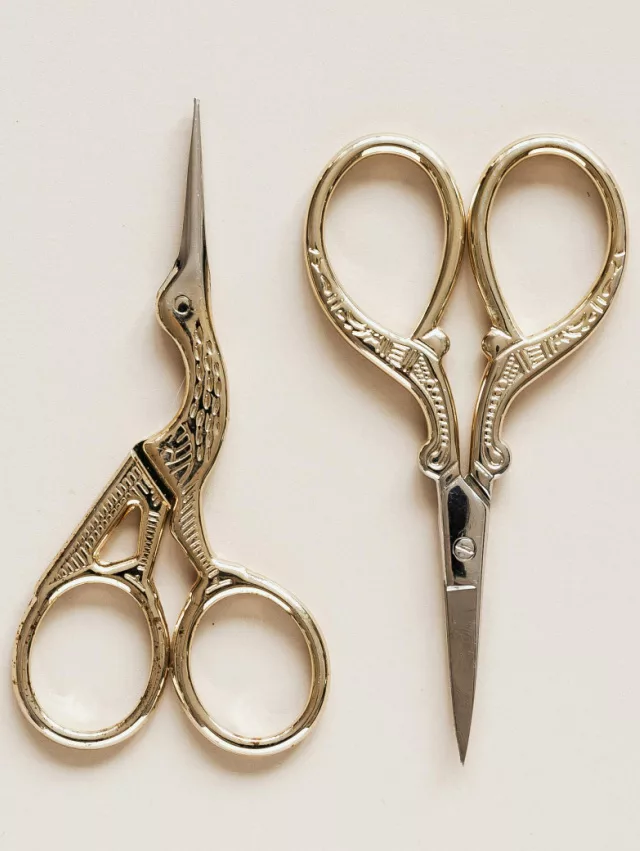
Mini-travel scissors
Fiskars gave me a pair of these and I love them! They’re small and portable, and I tied a ribbon so I can wear them around my neck. The ends are a bit rounded too, so they are safe to put in a suitcase or travel kit.

Fringe Scissors
I bought a pair so you don’t have to. Basically I think these are meant for cutting herbs, and the craft industry folks tried it for us. But they require a LOT of work. I say, give them a pass.
Taking care of scissors

Keep them clean. After use, wipe your scissors down with a soft, dry cloth to remove any debris, adhesive residue, or moisture. For sticky residues, a cloth dampened with water or rubbing alcohol can be used, but make sure to dry the scissors thoroughly afterward.
Store them properly. When not in use, store your scissors in a dry place. If they came with a protective sheath or case, use it to protect the blades from damage and to prevent accidental cuts. Avoid tossing them into a drawer where they can get banged around and dulled by other items.
Oil them occasionally. Apply a drop of oil to the screw joint of your scissors every few months. This lubrication helps keep the action smooth and prevents rust, especially if you live in a humid climate or if your scissors are exposed to moisture. Use sewing machine oil or any light oil suitable for tools.
Use them for their intended purpose. To maintain your scissors, only cut materials they are designed for. Using fabric scissors on paper or cardboard, for example, can dull the blades quickly. Similarly, avoid using them to cut materials that are too thick or hard, as this can damage the blades or the scissors’ alignment.
Sharpen them as needed. Even with proper care, scissors will eventually become dull and require sharpening. Use a professional sharpening service or a sharpening tool designed for scissors. Trying to sharpen scissors without the proper equipment can damage the blades or affect their alignment, making them less effective or even unusable. Blade sharpness is a must!
Following these tips will help keep your scissors in top condition, ensuring that every cut is clean and precise, and extending the life of your scissors.
Thanks for checking out my post about the best crafting scissors! These basic types of scissors cover a wide range of crafting needs, from sewing and embroidery to paper crafting and mixed media projects.

